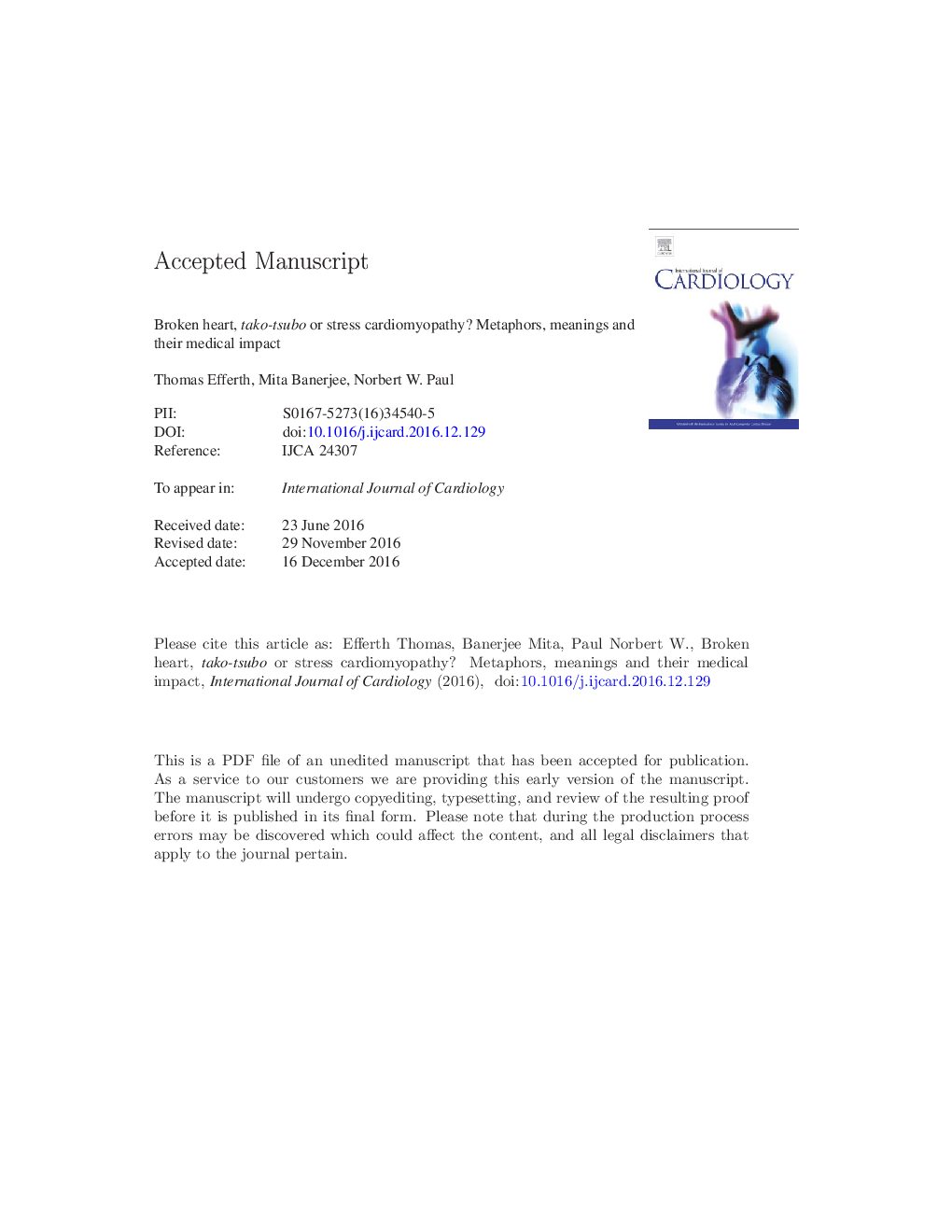| Article ID | Journal | Published Year | Pages | File Type |
|---|---|---|---|---|
| 5604768 | International Journal of Cardiology | 2017 | 23 Pages |
Abstract
While it seems plausible to accept the etiological role and pathogenic impact of personal loss, the pathogenic processes causing death remained relatively blurred. We will explain, why inaccurately stressing the fact that the broken heart and/or tako-tsubo syndrome would be a relatively new way of looking at stress-related cardiomyopathy as outlined by Yoshikawa (2015) [4] and why attaching stress-related cardiomyopathy to culturally powerful yet value-laden metaphors, might obstruct pathways to a better understanding, prevention and clinical management of the disease. By looking at narrative understandings and clinical representations of the broken heart, we aim to highlight the need for a more contextualised view of the broken heart syndrome in order to facilitate multi- and transdisciplinary approaches aiming at its prediction, prevention, and treatment.
Related Topics
Health Sciences
Medicine and Dentistry
Cardiology and Cardiovascular Medicine
Authors
Thomas Efferth, Mita Banerjee, Norbert W. Paul,
